
John Donne was an English poet, scholar, soldier and secretary born into a recusant family, who later became a cleric in the Church of England. Under royal patronage, he was made Dean of St Paul's Cathedral in London (1621–1631). He is considered the preeminent representative of the metaphysical poets. His poetical works are noted for their metaphorical and sensual style and include sonnets, love poems, religious poems, Latin translations, epigrams, elegies, songs and satires. He is also known for his sermons.
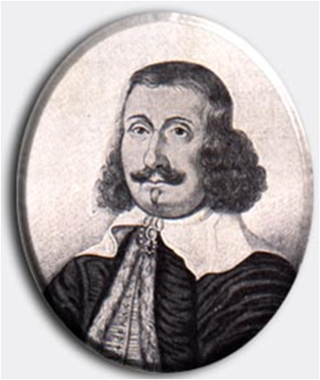
Francis Quarles was an English poet most notable for his emblem book entitled Emblems.

Christchurch Mansion is a substantial Tudor brick mansion house built in Ipswich, Suffolk by Edmund Withypoll around 1548–50. The Grade I listed building is located within Christchurch Park and sits by the southern gates close to the town centre of Ipswich. The mansion belonged to various noble families throughout its history but was purchased by the Ipswich Borough Council in 1884. Since 1885, the building has been used as a museum and is today run by the municipally run Colchester and Ipswich Museums Service (CIMS)organisation. The museum's rooms are preserved as past inhabitants would have known them, complete with original items such as furniture, fine clothing and children's toys. The museum also holds a collection of paintings by renowned local artists including John Constable and Thomas Gainsborough. The Mansion is free to enter and booking is not required.
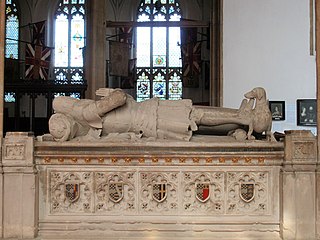
Sir Robert Drury (1456–1536) was an English knight, Lord of the Manor of Hawstead, Suffolk, and Knight of the Body to Kings Henry VII and Henry VIII. As a politician he was Knight of the Shire for Suffolk, Speaker of the House of Commons, and Privy Councillor. He was also a barrister-at-law. His London townhouse was on the site of today's Drury Lane.
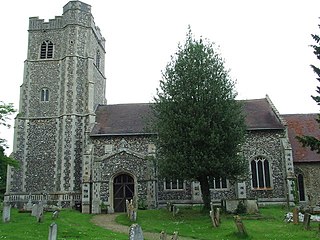
Hawstead is a small village and civil parish in the West Suffolk district of Suffolk in eastern England. It is located 5 kilometres (3 mi) south of Bury St. Edmunds between the B1066 and A134 roads, in a fork formed by the River Lark and a small tributary.
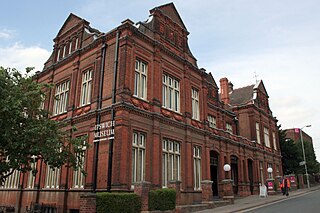
Ipswich Museum is a registered museum of culture, history and natural heritage, located in a Grade II* listed building on High Street in Ipswich, the county town of Suffolk. It was historically the leading regional museum in Suffolk, housing collections drawn from both the former counties of East Suffolk and West Suffolk, which were amalgamated in 1974.

Sir Nathaniel Bacon, was an English painter, landowner and horticulturist from Culford, Suffolk.

Paul van Somer, also known as Paulus van Somer, was a Flemish artist who arrived in England from Antwerp during the reign of King James I of England and became one of the leading painters of the royal court. He painted a number of portraits both of James and his consort, Queen Anne of Denmark, and of nobles such as Ludovic Stuart, Duke of Lennox, Elizabeth Stanley, Countess of Huntingdon, and Lady Anne Clifford. He is sometimes designated as "Paul van Somer I" to distinguish him from the engraver of the same name who was active in England between 1670 and 1694.
This is a list of Sheriffs of Norfolk and Suffolk. The Sheriff is the oldest secular office under the Crown and is appointed annually by the Crown. He was originally the principal law enforcement officer in the county and presided at the Assizes and other important county meetings. After 1576 there was a separate Sheriff of Norfolk and Sheriff of Suffolk.

Sir Thomas Gery Cullum, 7th Baronet was a medical doctor educated at London Charterhouse and Trinity College, Cambridge, and who later practised surgery at Bury St. Edmunds, Suffolk, where he served as an alderman and Deputy Lieutenant for Suffolk.
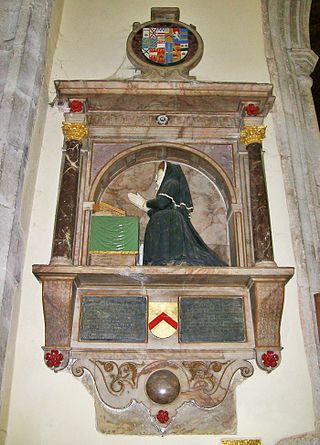
Elizabeth Stafford, also known as Dame Elizabeth Drury and – in the years prior to her death in 1599 – Dame (Lady) Elizabeth Scott, was a Lady of the Bedchamber to Queen Elizabeth I. She and her first husband, Sir William Drury, entertained Queen Elizabeth I at Hawstead in 1578.

"A Valediction: Forbidding Mourning" is a metaphysical poem by John Donne. Written in 1611 or 1612 for his wife Anne before he left on a trip to Continental Europe, "A Valediction" is a 36-line love poem that was first published in the 1633 collection Songs and Sonnets, two years after Donne's death. Based on the theme of two lovers about to part for an extended time, the poem is notable for its use of conceits and ingenious analogies to describe the couple's relationship; critics have thematically linked it to several of his other works, including "A Valediction: of my Name, in the Window", Meditation III from the Holy Sonnets and "A Valediction: of Weeping".

Hardwick House was a manor house near Bury St Edmunds, Suffolk, owned by Sir Robert Drury, Speaker of the House of Commons, of Hawstead Place. It was subsequently purchased in the seventeenth century by Royalist Thomas Cullum, a former Sheriff of London. Experts in Suffolk county history as well as noted authorities in antiquarian and botanical matters, the Cullum family of eight successive baronets authored works on the county and its fauna and flora. Sir Thomas Gery Cullum, a Charterhouse graduate, medical doctor and member of the Royal Academy and the Linnean Society, was a well-regarded author on science and botany.

Sir Nicholas Bacon, 1st Baronet, of Redgrave, Suffolk, English Member of Parliament. In 1611 he became the first man to be made a baronet. Bacon would serve on many commissions. The Privy Council constantly called upon him to conduct inquiries. He was a puritan leader in Suffolk. The power and prestige of the puritan ministries in many areas of the country owed their power to Bacon. Sir Nicholas Bacon was considered a good Christian by his contemporaries. Especially his chaplain, Robert Allen. Robert Allen stated that Sir Bacon's wife was dedicated to "God's holy religion and worship by every good and Christian means in the sight of men."
Mary Scrope was an English courtier. She was the granddaughter of Henry Scrope, 4th Baron Scrope of Bolton, and the sister of Elizabeth Scrope, wife of John de Vere, 13th Earl of Oxford, and Margaret Scrope, wife of Edmund de la Pole, 3rd Duke of Suffolk. She is said to have been in the service at court of King Henry VIII's first four wives. As the wife of Sir William Kingston, Constable of the Tower of London, she was in attendance on Anne Boleyn during the Queen's brief imprisonment in the Tower in May 1536, and both she and her husband were among those who walked with the Queen to the scaffold. By her first husband, Edward Jerningham, she was the mother of Sir Henry Jerningham, whose support helped to place Queen Mary I on the throne of England in 1553, and who became one of Queen Mary's most favoured courtiers.
Sir John Sulyard, of Wetherden and Haughley, Suffolk, was a prominent East Anglian magistrate, landowner, High Sheriff, knight and standard-bearer, strongly Roman Catholic in religious affiliation, who sat in parliament during the reign of Queen Mary.

Edmund Withypoll, Esquire, of London, of Walthamstow, Essex, and of Ipswich, Suffolk, was an English merchant, money-lender, landowner, sheriff and politician, who established his family in his mother's native county of Suffolk, and built Christchurch Mansion, a distinguished surviving Tudor house, as his Ipswich home.

Sir William Drury was an English landowner and member of parliament. He was the father of Sir Robert Drury, patron of the poet John Donne.
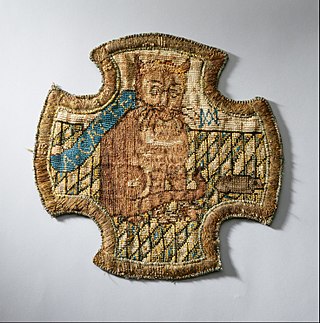
The Oxburgh Hangings are needlework bed hangings that are held in Oxburgh Hall in Norfolk, England, made by Mary, Queen of Scots and Bess of Hardwick, during the period of Mary's captivity in England.
Anne Bacon Drury (1572–1624) was an English literary patron. Her painted closet survives as a very rare example of Jacobean interior decoration.















